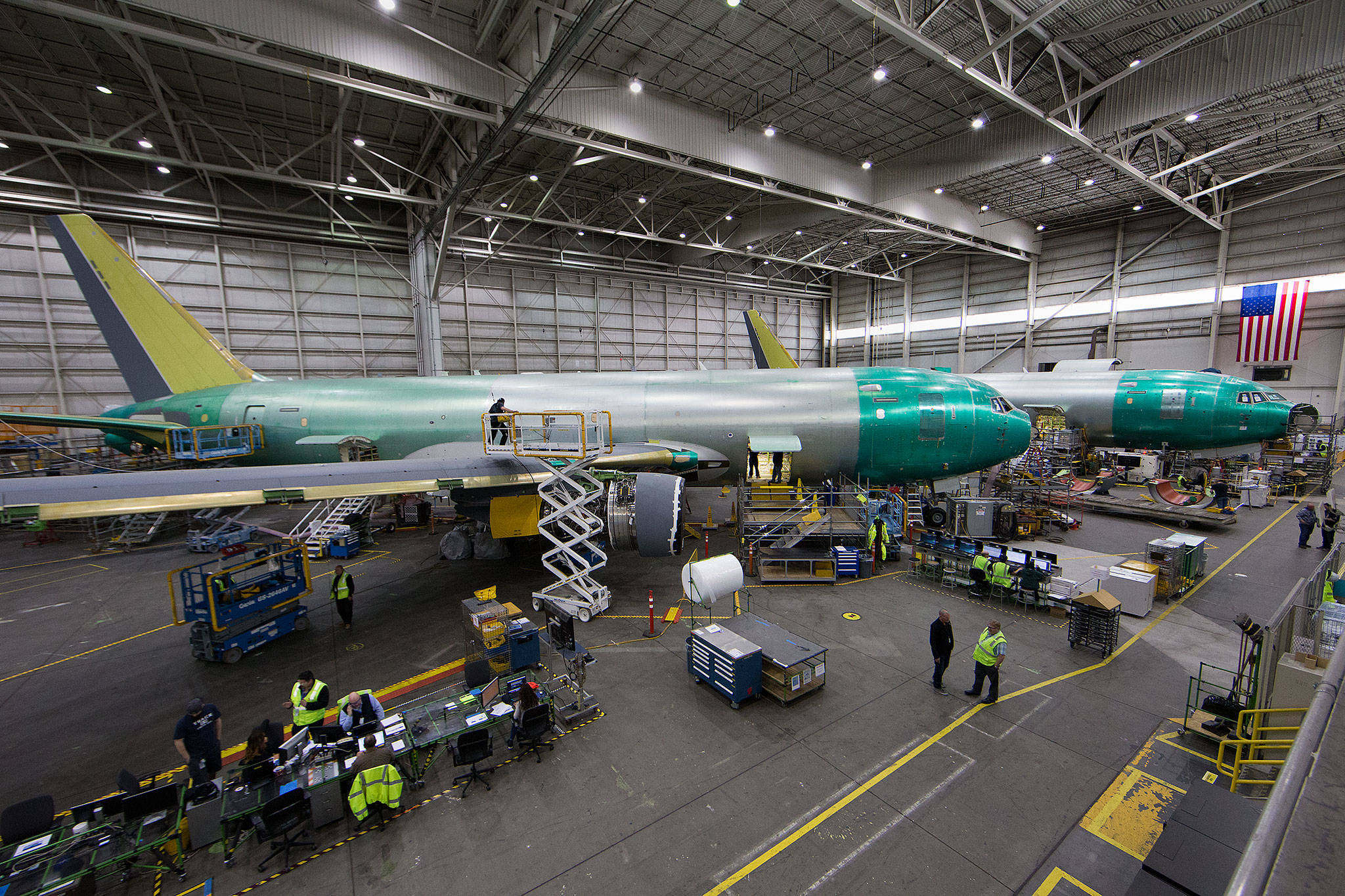EVERETT — Already behind schedule, Boeing’s KC-46 aerial refueling tanker is going to be later still.
When Boeing delivers the first KC-46 late this year, the U.S. Air Force will get the most-versatile tanker in the world, company officials say.
Completing testing and certification is the last big hurdle. Boeing is more than halfway through the process, but plenty more remains.
Clearing Federal Aviation Administration certification “is our current challenge for completing the program,” said Mike Gibbons, a Boeing vice president and general manger of the KC-46 program.
Last month, Boeing added a sixth test plane to quicken its progress through testing and certification. Earlier this year, the company told government officials that it had condensed the testing and certification schedule, and that it expected to start delivering three tankers a month in September and finish in February 2018.
A March report from the Government Accountability Office cautioned that the pace was ambitious and at risk of taking longer than expected. At the time, Boeing dismissed the report as overly cautious. However, the first KC-46A Pegasus slated for delivery is not expected to fly until October, Gibbons said.
The original deadline was to deliver the first 18 combat-ready tankers to the Air Force by this August.
Supplier and design problems dogged the tanker’s development. Boeing won the contract to develop the tanker for the Air Force in 2011. The tanker is based on its successful 767 jetliner.
The contract capped taxpayer costs at $4.9 billion. The delays and changes have cost Boeing roughly $2 billion in cost overruns. The latest charge was for $140 million, which Boeing reported in April. It came from the cost of rolling lessons from flight testing back into the production line, Gibbons said.
“We don’t expect to learn anything more out of flight testing,” he said.
Ground testing going on now at Edwards Air Force Base in California and next month at Naval Air Station Patuxent River in Maryland could uncover other rework, which would happen this summer, he said.
With testing and certification about 65 percent complete, the list of things that can create expensive surprises for Boeing is dwindling.
The Air Force plans to buy 179 KC-46s over the next 10 years as it begins upgrading its aging tanker fleet. The U.S. has more than 400 jet tankers. Most are Boeing KC-135s, which were developed in the 1950s. McDonnell Douglas designed the bigger KC-10 in the 1970s.
Unlike those older tankers, the KC-46 is built to perform multiple missions. It can refuel aircraft in flight, haul cargo, and move passengers or medical patients. It takes less than two hours to switch from one role to the other.
The KC-46 can refuel two aircraft at the same time with hoses — called drogues — trailing from pods mounted near its wingtips. It also can extend a single drogue or a boom — essentially a rigid straw — from the rear of its fuselage.
No tanker has ever gone through FAA certification before, a process that has proven much more time consuming than Boeing originally had expected. Only about 3 percent of the aircraft and its systems receive only military certification because it’s classified material.
The plane can operate covertly at night without lights visible to the naked eye. Instead, the tanker has infrared lights to direct the pilots flying fighter jets and other aircraft coming in to gas up. Those pilots use night-vision goggles to see the infrared lights. On current tankers, huge incandescent floodlights bathe the boom.
In mid-December, Boeing and Air Force test crews flying in a KC-46 over Eastern Washington successfully refueled a C-17 cargo plane at night and without visible lights. The operation went so smoothly, the C-17 pilots said they prefer the blacked-out method to floodlights, said Sean Martin, head of Boeing’s boom testing.
When a pilot puts on or takes off night-vision goggles, it takes 15 minutes for the eyes to adjust. That costs valuable time and fuel during combat. The KC-46 system means American warplanes will have more time over targets — if it comes to that, he said.
“We’ve designed a system so good, it’s going to change how the Air Force fights,” Martin said.
Dan Catchpole: 425-339-3454; dcatchpole@heraldnet.com. Twitter: @dcatchpole.
Talk to us
> Give us your news tips.
> Send us a letter to the editor.
> More Herald contact information.

























